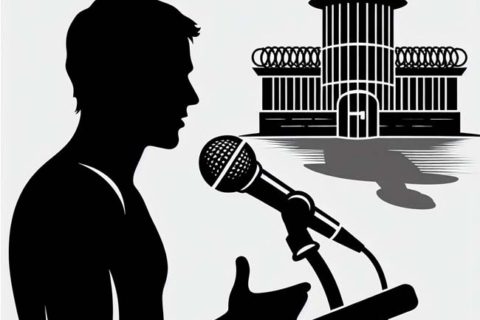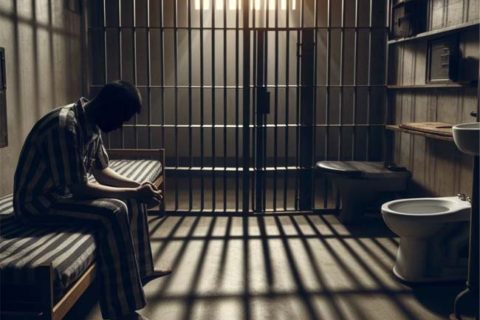The United States retains its top position in the list of the countries with the highest incarceration rates in the world with 5% of the world population and nearly 25% of the world’s prisoners. As the states in the United States adopt “truth in sentencing laws”, inmates or prisoners or detainees in this country are spending more time sitting in the jails, prisons, or detention centers. It is needed for them to serve 85% of their sentence behind the bars.
According to the data reported in 2012, about 1 in every 35 adults in the United States or 2.9% of adult residents was on probation or parole or incarcerated in prison or jail. In 1997, it showed the same rate. It means an estimated 1 out of every 20 persons will spend time in jail or prison during their lifetime if the rate remains the same. What is shameful is that many of the people that are caught in the net that are cast to catch the criminal offender will have to deal with mental illness.
There is an article written by Dean Aufderheide and Patrick Brown titled Crisis in Corrections: The Mentally Ill in America’s Prisons. This article was about the alarming growth in the number of mentally ill individuals behind bars. Since the article was released, it has been shown that about 20% of prison inmates have a serious mental illness and 30 to 60% of them have substance abuse problems. The numbers are higher if the broad-based mental illness is included. For instance, 50% of males and 75% of female inmates in the state prisons, and 75% of females and 63% of male inmates in jails, will have to deal with the mental health issue that needs mental health services in any given year.
Apparently, the individuals who are being incarcerated have more severe kinds of mental illness. Do you know the most common type of mental illness in prisons? If you have no idea and are also interested in it, you can find out the answer to the question below.
According to the research done by Jennifer M. Reingle Gonzalez, PhD and Nadine M. Connell, PhD titled Mental Health of Prisoners: Identifying Barriers to Mental Health Treatment and Medication Continuity, the most common mental illness in prisons is depression. Did you guess it right? It is actually pretty easy to guess though.

Depression is followed by mania, anxiety, and posttraumatic stress disorder. The research found that about 26% of the inmates were diagnosed with a mental health condition at some point during their lifetime. Unfortunately, only a very small proportion or 18% were taking medication for their condition(s) on admission to prison. Furthermore, in such a place, more than 50% of people who were taking medication for mental health conditions at admission did not get pharmacotherapy in prison. Compared with the ones presenting with less overt conditions such as depression, those with schizophrenia were most likely to get pharmacotherapy. The lack of the treatment continuity is caused by screening procedures that do not result in treatment by a medical professional in prison.
Just like the research titled Mental Health of Prisoners: Identifying Barriers to Mental Health Treatment and Medication Continuity, a new Urban Institute report also shows the same result. According to that report, depression is the most common mental illness in prisons with 21%. It is followed by manic-depression, bipolar disorder, mania with 12%, schizophrenia or another psychotic disorder with 5%, post-traumatic stress disorder with 7%, another anxiety disorder with 8%, and personality disorder with 6%.
If we parse by gender, the numbers look more interesting with 55% of male inmates in state prisons are mentally ill and 73% of female ones are. However, the think-tank writes that only one in three state prisoners and one in six jail inmates who suffer from mental health issues report having received mental health treatment since admission.
There is a popular program that might be helpful to reduce the numbers. The things that are known as “mental-health courts” have become a trend in some states as an alternative to incarceration. For instance, a shoplifter with one of the kinds of mental illness such as schizophrenia is screened and found eligible for mental health court. That one then is sentenced to judicially supervised treatment. Since 2000, these kinds of courts have expanded quickly. Right now, there are a lot of them in the United States.
The first case processed in the mental health court in Northampton County that is located in eastern Pennsylvania happened a time ago. The case involved a depressed alcoholic who broke into an awning store. He was looking for a place to sleep. According to the Allentown Morning Call that man will spend 90 days in an inpatient treatment facility and then transition through social services back into the community.
In this modern world, the courts are not always the solutions to everything. 2/3 of them use jail time to punish non-compliance with treatment. The Urban Institutes states that the success of such courts at cutting recidivism has been mixed. However, they also think that these types of courts are moderately effective.
It is sure that there is a hope to minimize the mental health issues in the prisons with mental health courts. However, just like what the Bazelon Center stated in the recent overview of mental health courts, the most important thing is that they not become the only avenue for the poor and mentally ill people who need help. It said that there is an inherent risk that any court based diversion program might lead law enforcement officers to arrest an individual who has a mental illness in the expectation that this will lead to the provision of the services. As of now, there are only prison dorms that are full with those who have anxiety, depression, manic or hearing things. The Bazelon Center said that there is no rational purpose served by the current system.

A bookworm and researcher especially related to law and citizenship education. I spend time every day in front of the internet and the campus library.




